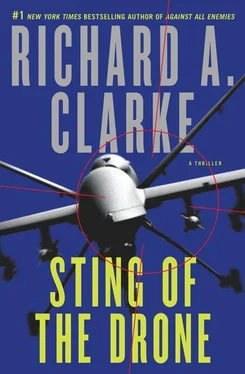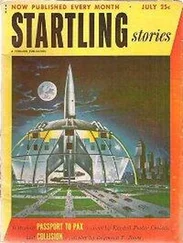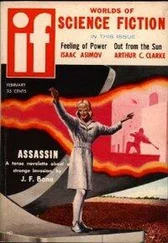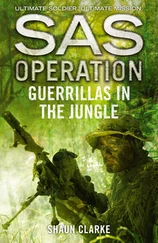“Well, Sandy, even without a named target on screen, I am looking at enough suspicious activity here to designate this a signature-based strike. I think we got us a terrorist camp.” As Erik Parsons spoke he patted Bruce Dougherty’s shoulder.
Sandra Vittonelli stood and squinted through the glass at the Big Board in the next room. “I’ll be right out to the floor.”
Since she was far away from Washington, Sandra wore jeans, but in deference to standards she had learned at Headquarters over the years, she also wore a blue blazer. It helped to make clear the authority relationships. Sexism was officially taboo, but some of these jocks needed reminders sometimes. They were not all used to taking orders from a short, civilian woman in blue jeans. Although she was a CIA employee, as Director of the Joint Global Coordination Center for the program, she owned the pilots. There had been a single, integrated drone program for both the Pentagon and the Agency planes now for three months. When Erik had asked her about the blazer once, she had told him that she wore it because the air-conditioning was set too low in the Center and, moreover, the jacket also gave her lots of pockets for her “stuff.” Then she had changed the subject to why the pilots felt the need to wear jumpsuits when their airplanes were thousands of miles away.
As she stood at Bruce’s cubicle, she was aware that all the other pilots were watching her and not focusing on the video feeds from their aircraft. “I gotta admit, it does fit a signature,” she told Eric and Bruce, “but how long you been looking at it?”
Bruce looked at the digital elapse clock running in his console. “I’ve been loitering for seventy-three minutes now. I’ve run electro-optical, infrared, and synthetic aperture radar passes. This is one of the new birds with all three types of sensors. The analysis software has located thirty-two human life-forms, identified all of them as adults. Except for seven guys on the hills, all of them are under the camouflage. No signatures of women or kids.”
She looked at Erik, who shook his head in affirmation. “It’s a good one, Sandy.”
Vittonelli put on her poker face. “Let’s loiter some more. And pull up any imagery of the place from past missions. Somebody must have passed over it before en route to somewhere else.” Then she picked up the handset of a red phone. “This is the Director, GCC. Let’s wake up the boys and girls in DC. I’m initiating a Kill Call.”
SATURDAY, JUNE 27
ABOVE PAKTIKA PROVINCE
AFGHANISTAN
The mechanical extension of Major Bruce Dougherty, the thing that moved in the air when Bruce’s hand made adjustments with the joystick in his cubicle, was pressing ahead at only eighty-five miles per hour against the cold wind two miles above the canyon. Up there the sound of the propeller at the rear of the plane, twenty-seven feet from the nose, might have seemed loud, but there was no space on board for a human, nobody up there to hear the constant buzzing. No one was there to notice that the bottom of its fuselage and its forty-eight-foot-long main wings were a light blue like the sky above it, while the top of the aircraft was a dark gray. There was no one to see the three mechanical eyes of the sensors twisting, adjusting, focusing. The pump quietly kept the fuel flowing steadily to the little engine. The seven onboard computers hummed softly. The blister antenna, inside the bump on the top of the plane, moved silently to keep pointed at the satellite, while sending a steady stream of data up to space and capturing the constant flow coming down.
In response to Bruce’s slight pressure to the control, the bird now banked, its left wing moving up, causing the aircraft to move to the right, back toward the men below the nets.
In the canyon, shadows now covered all of the road and much of the rock wall. Some goats were still in the sun, higher up, near the watcher, hunting for grass and little stubbly shrubs among the rocks. The air had been still, but then the wind shifted and the watcher heard buzzing. His eyes darted back and forth, scanning the bright sky. He saw just the blue, nothing else, the blue. Then the buzzing came again, louder, closer. He unbuckled the radio from his belt and hit the push-to-talk panel. “Drone.”
As he spoke the word, which meant the same thing in Pashtu as it did in English, the watcher on the hill was bowled over by the blast from the first of the four Hellfire missiles hitting the canyon floor below. The missiles hit ten meters apart in a tight pattern, each puncturing camouflage netting and canvas, bursting into orange-yellow balls of flame and then into black plumes of fast climbing, churning, thick smoke. Sections of the rock wall broke off and fell to the canyon floor, kicking up brown clouds of dust. The concussive sound rolled down the canyon, overwhelming and persistent. The goats on the hill tripped and faltered as they ran higher up. Over a mile above them, the blue-tinted drone nosed up and banked right into a tight turn.
Another watcher on the road near the big boulder to the south saw the flashes in the distance before he heard the sound. Then it took him almost twenty minutes to climb higher, enough out of the canyon so that the satellite phone could pick up a signal. He knew the call could only last thirty seconds so he thought of what he would say before he hit Call. “Mohsin Qazzani. Droned.”
The unmanned aircraft circled for a few minutes more, recording the BDA, the Bomb Damage Assessment, waiting to see if others would arrive to help the injured. If others showed up, they could be hit by the two Hellfire missiles left on the Predators.
No one came.
SATURDAY, JUNE 27
GLOBAL COORDINATION CENTER
CREECH AFB, NEVADA
Erik Parsons pointed to Bruce Dougherty, “Okay, bring the bird home.”
Standing next to him, Sandra Vittonelli turned toward the two men in flight suits and read aloud the message on her secure iPad. “NCTC reports Mohsin Qazzani was at the camp. He’s the younger brother and chief deputy to the head of the Qazzani clan, the Pakistani drug cartel and designated terrorist group. Righteous shoot. Big Kill.”
“Way to go, Brucey,” Erik high-fived his pilot.
“Righteous kill, man! That’s what I’m talkin’ ’bout,” the Major called out as he stood in his cubicle. A ripple of hoots and applause arose in the darkened room. On the Big Board the image from the drone showed the smoldering fire in the blackened mounds on the canyon floor. Then the image jerked and shifted to the tops of mountains, beautiful in the early afternoon sun, set against the cloudless blue.
But when he later left the room full of pilots and walked into the fresh air, Erik Parsons found himself in a place where it was still dark, hours before the dawn. He stretched and sucked in the air, stared at the stars, then walked to the car parked in the Squadron Commander’s space.
Erik turned on the radio in his black Camaro as he drove past the guards at the gate, moving out into what the pilots called “Civilian World.” He passed Indian Springs and headed south on 95 toward the city.
“It’s all-you-can-eat at Las Vegas’s best Fancy Seafood night at the Galaxy Club Wednesday with Maine lobster, Alaska King Crab, and Louisiana crawfish….”
He switched the Bose sound system from the local FM radio station to Sirius satellite radio and ’90s Pop Hits. Although it was four in the morning the lights from the Strip glared on the horizon from the billion-dollar casinos, the re-creations of Manhattan, Paris, Venice, ancient Rome, and even more ancient Egypt. As incongruous as it all was, he loved it, the dancing fountains, the erupting volcano, the clashing pirate ships. Leave it to the Air Force, he thought, to put a complex of air bases in the desert outside of Las Vegas, Creech Air Force Base to the northwest for special operations and the huge Nellis Air Force Base to the east where they flew the fighter-plane contests, force on force.
Читать дальше












